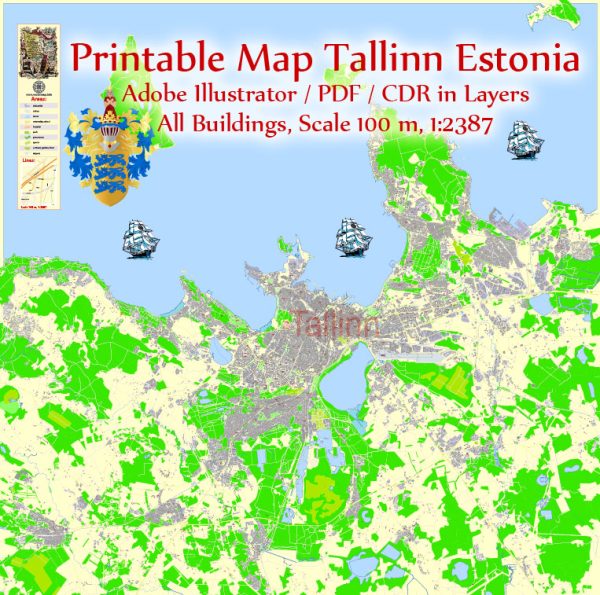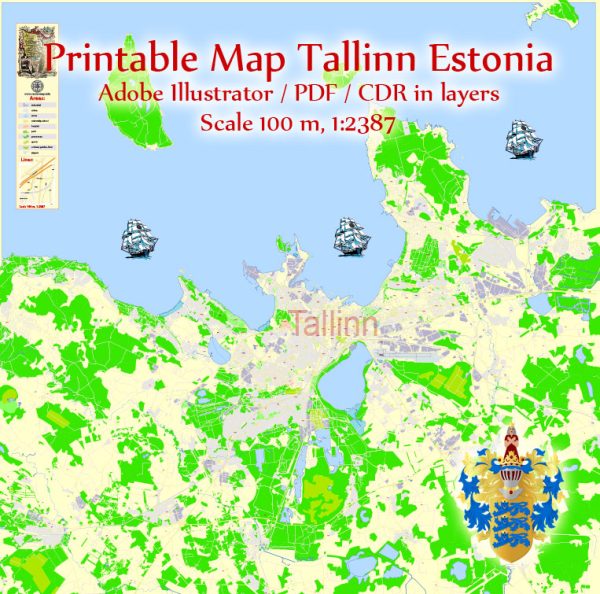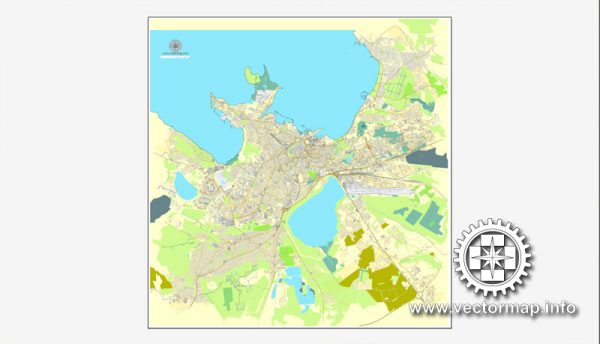Tallinn, the capital and largest city of Estonia, has a rich history of urban development that spans over eight centuries. The city’s strategic location on the Gulf of Finland has played a crucial role in its growth and development. Here’s an overview of Tallinn’s history of urban development:
- Medieval Tallinn (13th-16th centuries):
- Tallinn’s history as a city dates back to the early 13th century when it was a significant trading hub for merchants from Germany, Denmark, and Russia. The city was part of the Hanseatic League, a medieval trade association.
- The medieval Old Town, a UNESCO World Heritage site, preserves much of the architecture and layout from this period. Notable structures from this time include the Town Hall, the Church of St. Nicholas, and the city walls with towers.
- The city’s layout reflects medieval planning, with narrow winding streets and buildings built closely together.
- Swedish and Russian Rule (17th-19th centuries):
- Tallinn came under Swedish rule in the 17th century and later fell under Russian control in the early 18th century.
- During these periods, some Baroque and neoclassical elements were added to the city’s architecture. The Kadriorg Palace, commissioned by Peter the Great of Russia, is a prominent example.
- Estonian Independence (20th century):
- Estonia declared its independence in 1918, and Tallinn became the capital of the newly established republic. This period saw the emergence of a more modern urban environment.
- The city expanded beyond the medieval walls, and new neighborhoods were developed. The architecture of this time reflects a mix of Art Nouveau, functionalism, and other contemporary styles.
- Soviet Era (1940-1991):
- During the Soviet occupation, Tallinn underwent significant changes. The authorities constructed large residential areas to accommodate the growing population. Soviet-style architecture dominated the cityscape, with standardized apartment blocks and government buildings.
- Post-Soviet Era (1991-present):
- With Estonia regaining independence in 1991, Tallinn experienced a new phase of development. The city embraced a market economy, and there was a renewed focus on preserving and restoring historic areas.
- Tallinn’s modernization included the development of infrastructure, shopping centers, and contemporary architecture. The city attracted foreign investment, and the economy diversified.
- Contemporary Tallinn:
- Tallinn has become a dynamic and vibrant European capital with a mix of historical charm and modern amenities. The city continues to grow economically and culturally, with a thriving tech sector and a reputation as a digital hub.
Throughout its history, Tallinn has managed to preserve its medieval core while adapting to the changing times, making it a fascinating blend of old and new in terms of urban development. The city’s rich history is visible in its architecture, streets, and cultural heritage.




 Author: Kirill Shrayber, Ph.D.
Author: Kirill Shrayber, Ph.D.